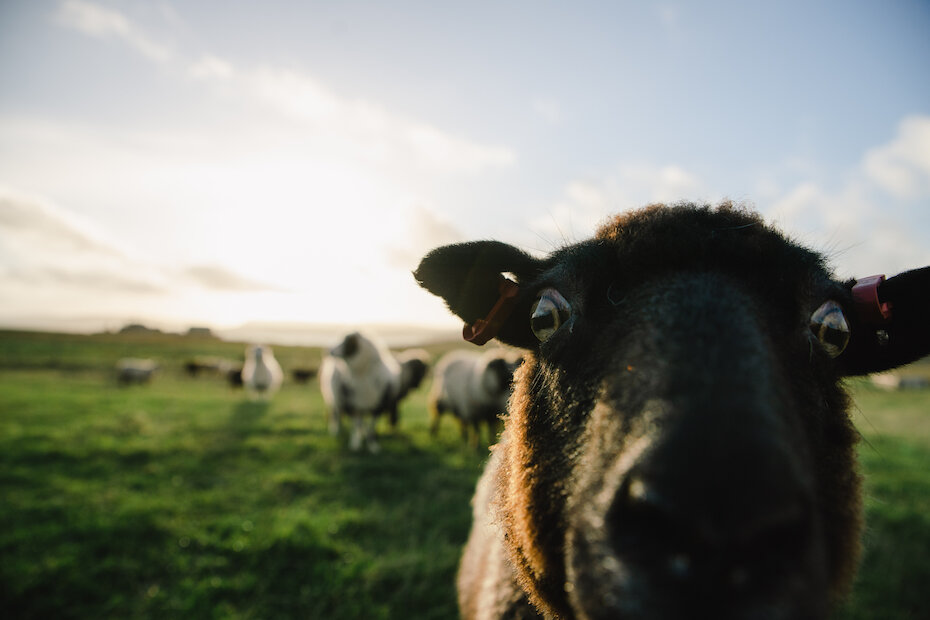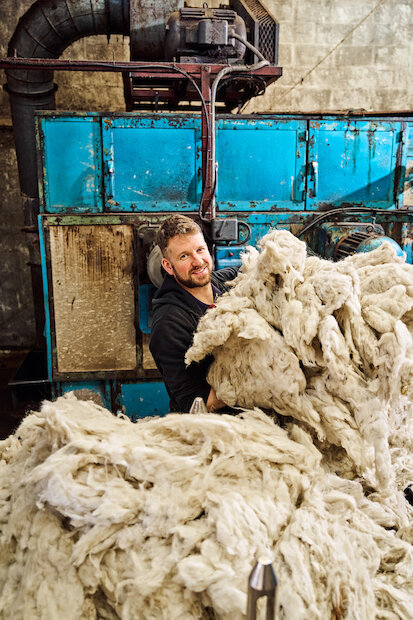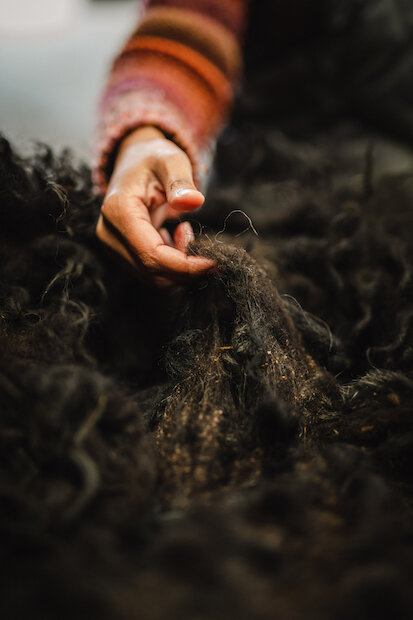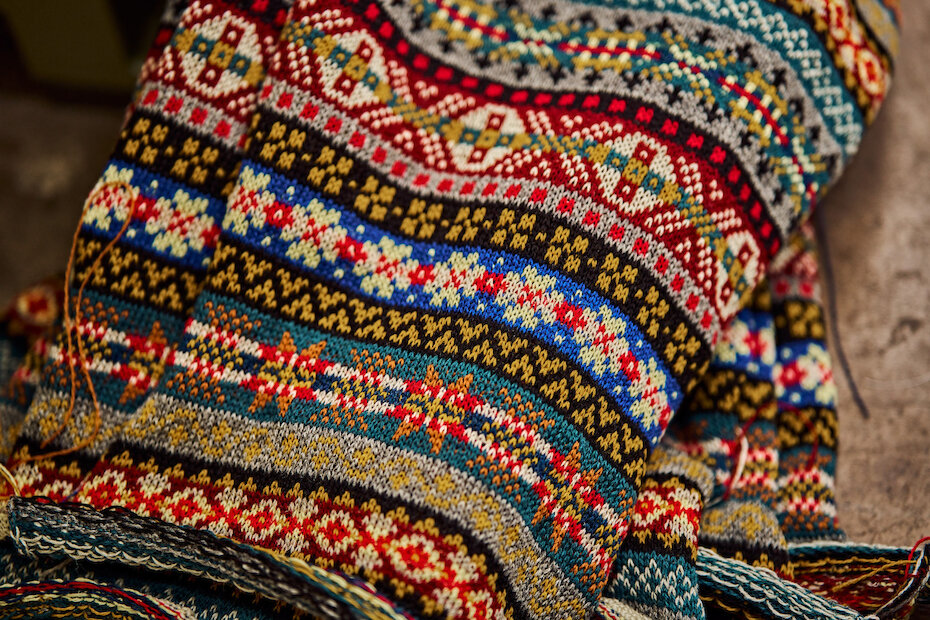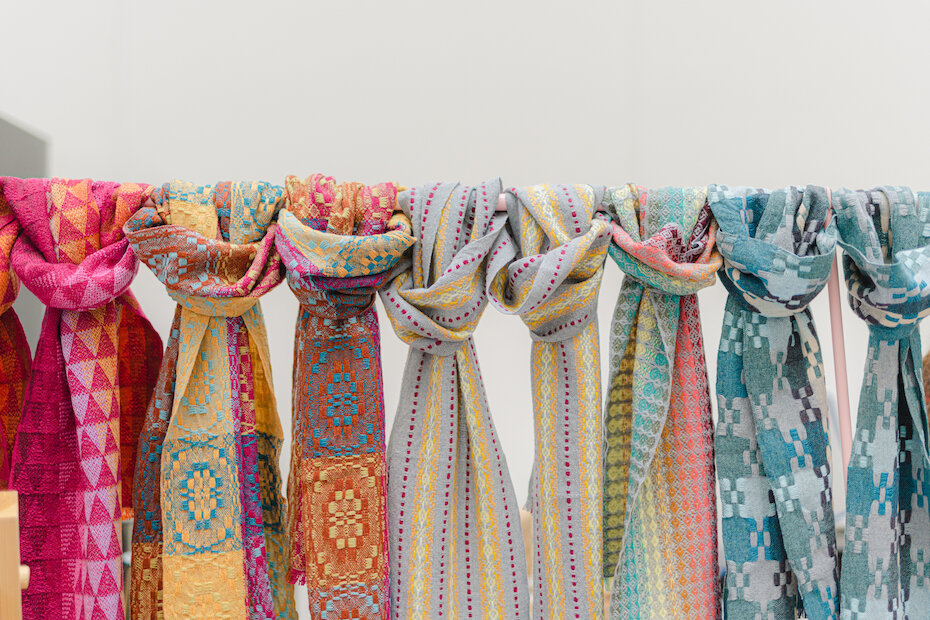Shetland wool and textiles are famed around the world, an amazing fact when you consider the islands’ location and small size. But over hundreds of years, the combination of our sheep, their wool and Shetlanders’ skills and passion have created a strong and thriving textiles culture that continues to grow.
It’s perhaps because Shetland has a moderately chilly climate and a lot of sheep, that once knitting arrived it took hold. Located at 60º North, where the Atlantic Ocean meets the North Sea, Shetland has always been a crossing point for sea-travellers. In this way our textile cultures were exposed to influences from Scandinavia and many other countries.

